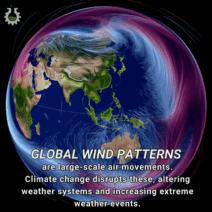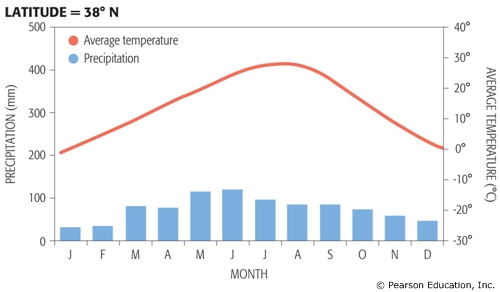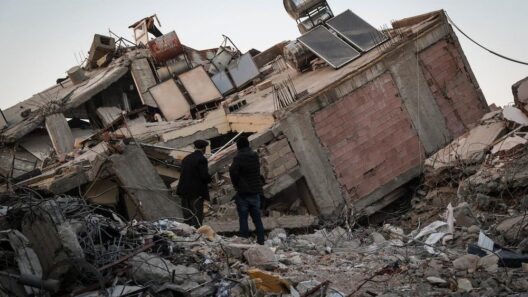The Sahara Desert, a vast expanse that stretches across Northern Africa, is a land of paradoxes, where the sun reigns supreme during the day, and the night can bring a shroud of cold befitting the Arctic. This intricate tapestry of climate is woven from threads of several meteorological phenomena, making the Sahara not just a desert but a living testament to the extremes of weather.
Imagine an oven—its door ajar, allowing just enough heat to escape. This is akin to the situation in the Sahara. With daytime temperatures that commonly soar above 40 degrees Celsius (104 degrees Fahrenheit), the Sahara transforms into an inferno that bakes the land and parches the soul. The sun’s unrelenting rays scorch the arid earth, creating conditions that are not only harsh but also inhospitable to most forms of life. However, the blistering sun is not the Sahara’s only claim to fame; it is also a master of contrasts.
As the fiery orb of daylight descends beneath the horizon, a curious transformation occurs. The surface of the earth cools, rapidly shedding the heat it has accumulated throughout the day. Almost like a scene from a fantastical tale, this shift turns the Sahara from a fiery furnace into a chilling bed of tranquility. Nighttime temperatures can plummet to as low as 5 degrees Celsius (41 degrees Fahrenheit) or even lower in certain areas, encapsulating the desert in a cold embrace.
The stark differences between day and night paint a vivid picture of the desert’s allure. This temperature swing—commonly referred to as diurnal variation—is an integral aspect of the Sahara’s climatic identity. Indeed, the Sahara’s dual personality compels both awe and respect for the natural forces at play. During the sweltering daylight, one might find the relentless heat exuding a sense of desolation and solitude—a reminder of nature’s raw power. Yet, as twilight approaches, the cold creeps in, more like a gentle caress than the brutal slap of heat, inviting introspection and reflection.
Precipitation in this arid expanse is as scarce as a well-timed rain dance. The Sahara, classified as a hyper-arid desert, receives an annual average rainfall of merely 25 millimeters (about one inch). This precipitation is akin to a whisper against the backdrop of roaring silence; it arrives infrequently and unpredictably, often in the form of brief, intense storms that can quickly transform sandy expanses into temporary oases. Such rare occurrences are temporary miracles, replenishing the soil just enough to nourish fleeting bursts of life, ultimately emphasizing the starkness of drought that dominates the landscape.
Beyond temperatures and precipitation patterns, one must also consider the relentless winds that sweep through the Sahara. These winds are not mere air currents, but rather the architects of the desert’s shifting sands, sculpting dunes that can reach heights of 250 meters (820 feet). The simoom, a dry, hot wind, can whip through the desert with such ferocity that it feels like a furnace blast. Meanwhile, the khamsin, a wind that can carry dust and sand for vast distances, often acts as a reminder of the Sahara’s unforgiving nature, cloaking the sun and rendering visibility almost null.
Amidst all these fluctuating conditions lies an astonishing biodiversity that has adapted to this hostile environment. The flora and fauna of the Sahara are masters of survival, showcasing a resilience that is nothing short of remarkable. Cacti, succulents, and hardy plants take root in sporadic patches, taking advantage of the ephemeral rain. Meanwhile, creatures such as the fennec fox and the Saharan antelope demonstrate astonishing adaptations, showcasing their extraordinary capabilities to thrive in extreme temperatures, both hot and cold.
In the grand scheme of climatic phenomena, the Sahara serves as a microcosm of earth’s broader environmental narratives—climate change being the most pressing. The impending changes in global weather patterns can significantly impact this region that already exists on the precipice of extreme conditions. Desertification, the process by which fertile land becomes desert, could further exacerbate the existing adversities faced by the ecosystem and the human communities residing on its fringes.
When contemplating the Sahara, one cannot disregard the cultural heritage that it encapsulates. For millennia, it has served not only as an imposing barrier but also as a bridge between civilizations. The nomadic tribes that call this desert home have developed a profound understanding of its mercurial climate. Their survival is a testament to their adaptive strategies, enabling them to navigate the complexities of their environment with grace and ingenuity.
Thus, the Sahara Desert stands as a glorious example of nature’s dichotomy—a realm where scorching days are juxtaposed against freezing nights. Its climate illustrates an intricate balance, wherein each element plays a crucial role in sustaining the delicate web of life that clings to existence within its vast bounds. Those who dare to explore the Sahara will find not merely a desert, but a living paradox, a poetic narrative of resilience amidst extremes, and a vital reminder of the fragility of our planet’s climate system.







